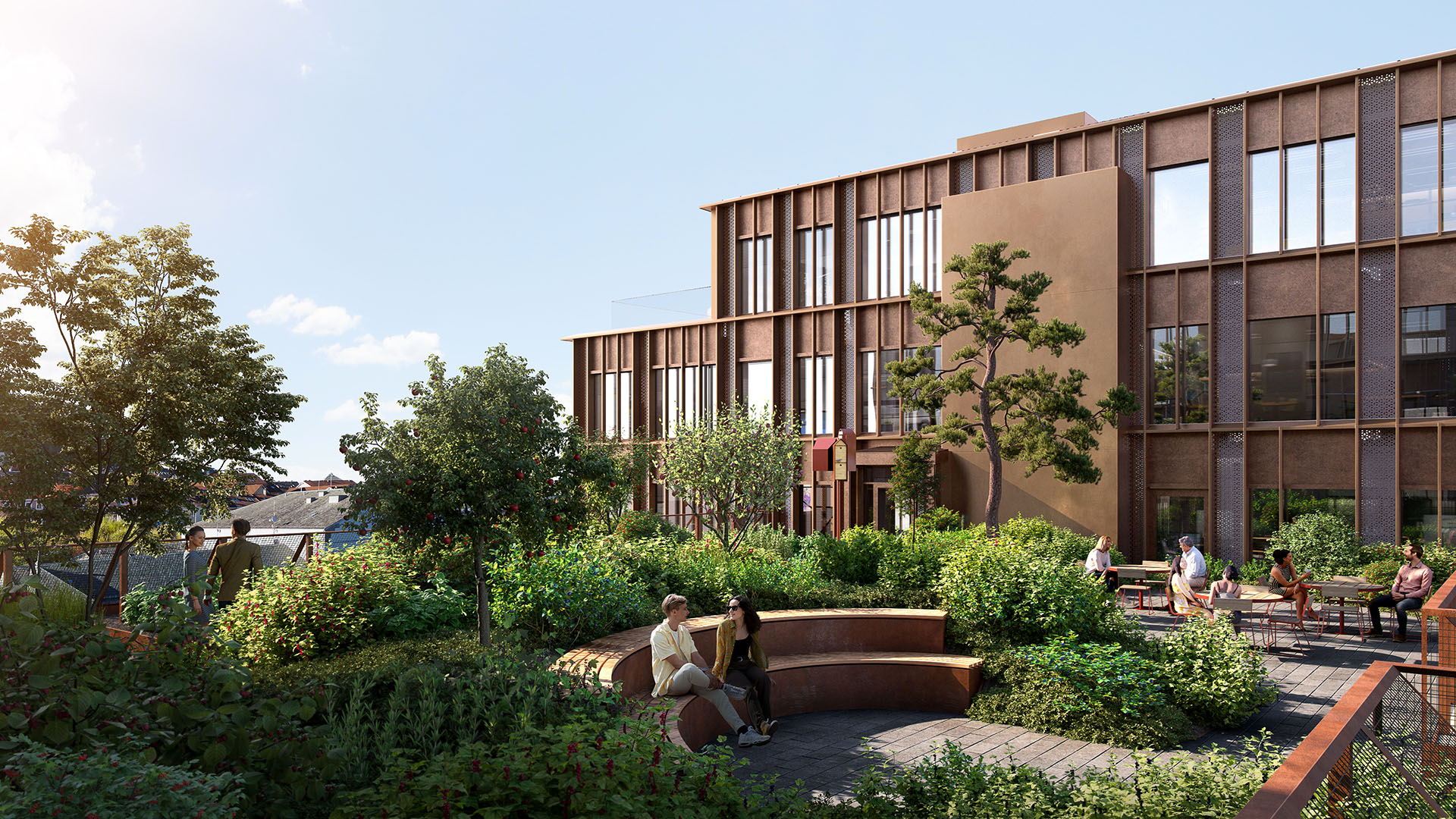BIOTOPE ROOF
A Place for Nature, People, and Food Cultivation

For BARA Eiendom at Kronstad in Bergen, we have developed a nature-inspired rooftop garden on top of the new Link building.
In modern urban development—especially in densification projects—it is particularly important to preserve nature and natural ecosystems. At Kronstad, construction is taking place on former industrial and commercial lots with little existing vegetation. To us, it is essential to add more wild nature, holistic ecosystems, and promote biodiversity. This roof actually offers more green space than what existed before construction.

This rooftop is designed to be a welcoming place to enjoy a coffee or chat with friends and colleagues—surrounded by lush plants and nature. Nature with rich biodiversity and a layered structure that retains stormwater and helps reduce strain on the municipal drainage system. Our rooftops are designed and programmed to allow natural processes to unfold with minimal interference and maintenance. Birds and insects are encouraged to forage on the roof and find safe, natural habitats.

On the rooftop surface between the two towers, we have planned a natural garden with a high degree of native vegetation. There will be generous planting of fruit trees and berry bushes. Inside the green fence to the west, a dedicated area will be established for simple and functional cultivation of vegetables, lettuce, and herbs—food that will be used in the building’s cafeteria.

The green roofs atop the two towers also function as biotope and habitat roofs. The overall scale and coherence of these new green rooftops—together with the nature and food-producing roofs on the adjacent buildings, Buen and Portalen—contribute to making Kronstadparken a valuable addition to urban biodiversity. Distinct biotopes and ecosystems will develop here, supporting stormwater management, carbon capture, and providing important habitats for microfauna, insects, birds, and native vegetation. Biotope and habitat roofs are designed as living spaces for specific species and to recreate natural habitats. These rooftops serve as valuable resources for urban pollinators such as bees and bumblebees. Species displaced from their natural habitats often find a new home on these green roofs.
Our nature-based approach—through design, choice of materials, and plant selection—makes our rooftops cost-effective in terms of both construction and maintenance. We plan for efficient and time-saving upkeep and allow natural processes to unfold. Some plant species will thrive better in specific areas of the roof, depending on sun, wind, and water availability. After two growing seasons, the roof will require minimal care and maintenance.

The Link building is scheduled for completion in 2026/2027.

